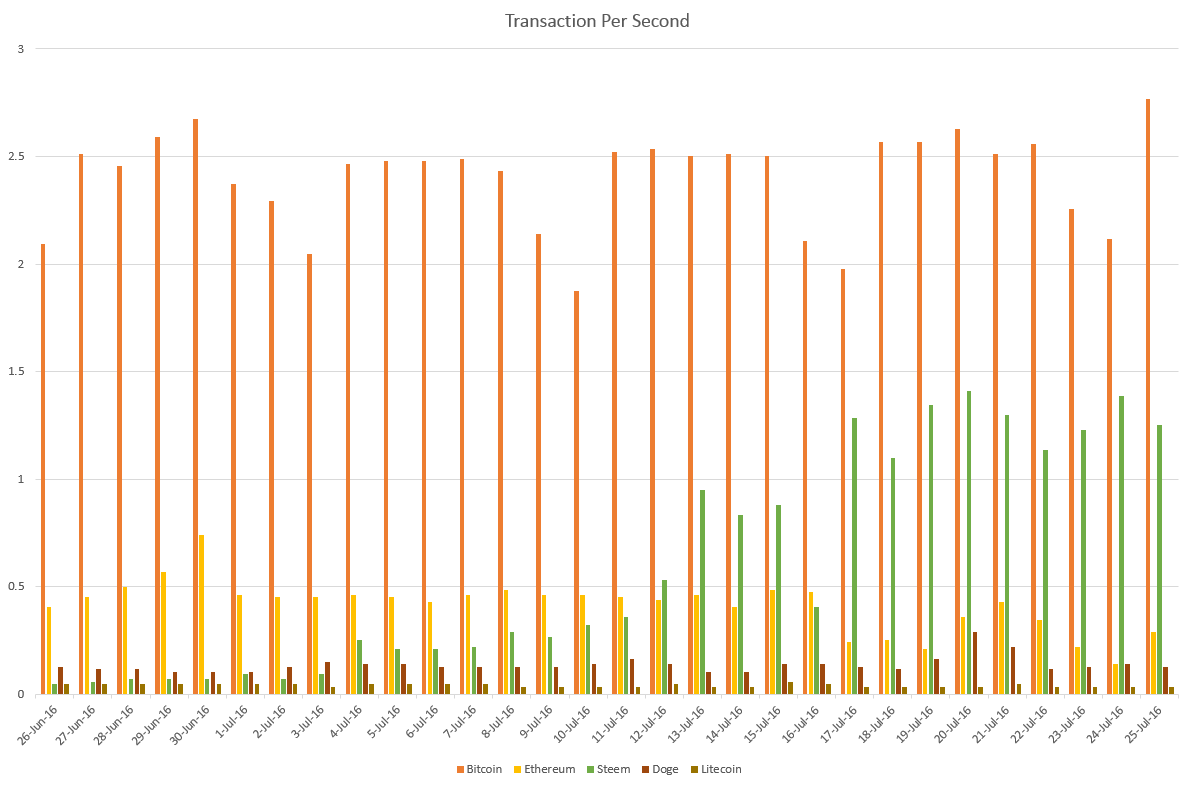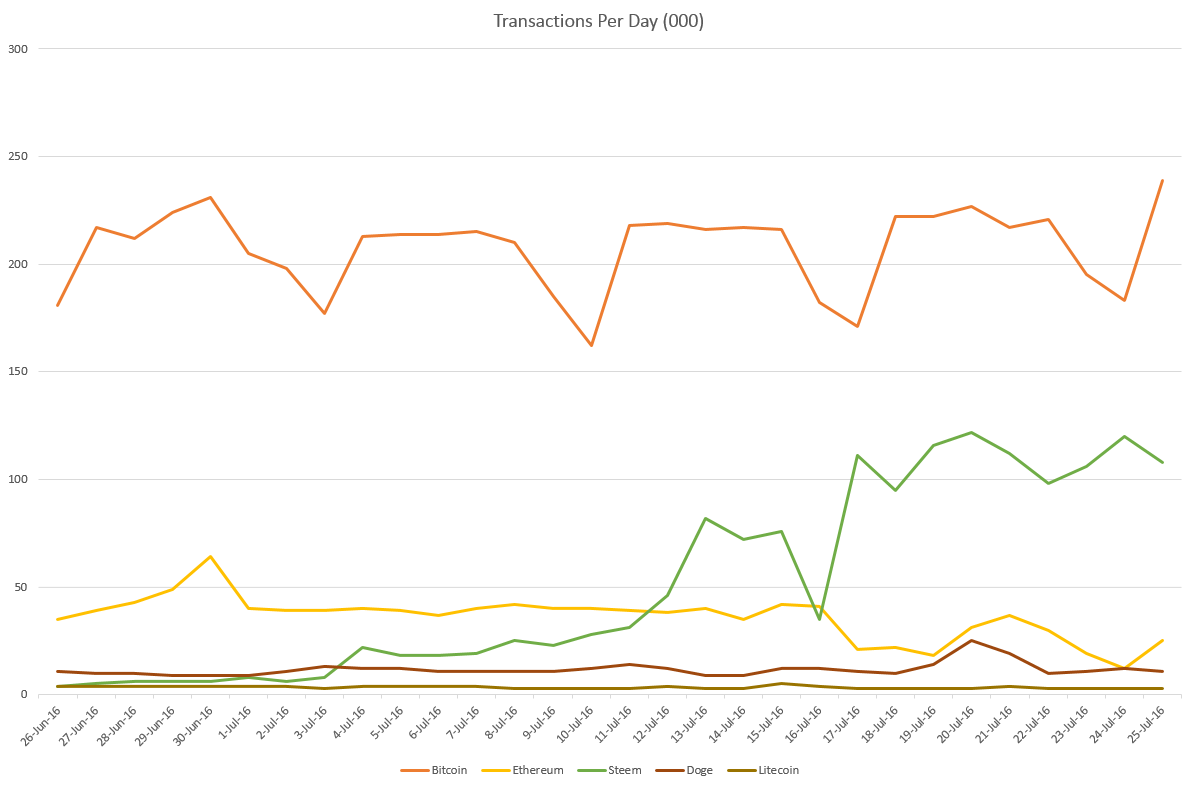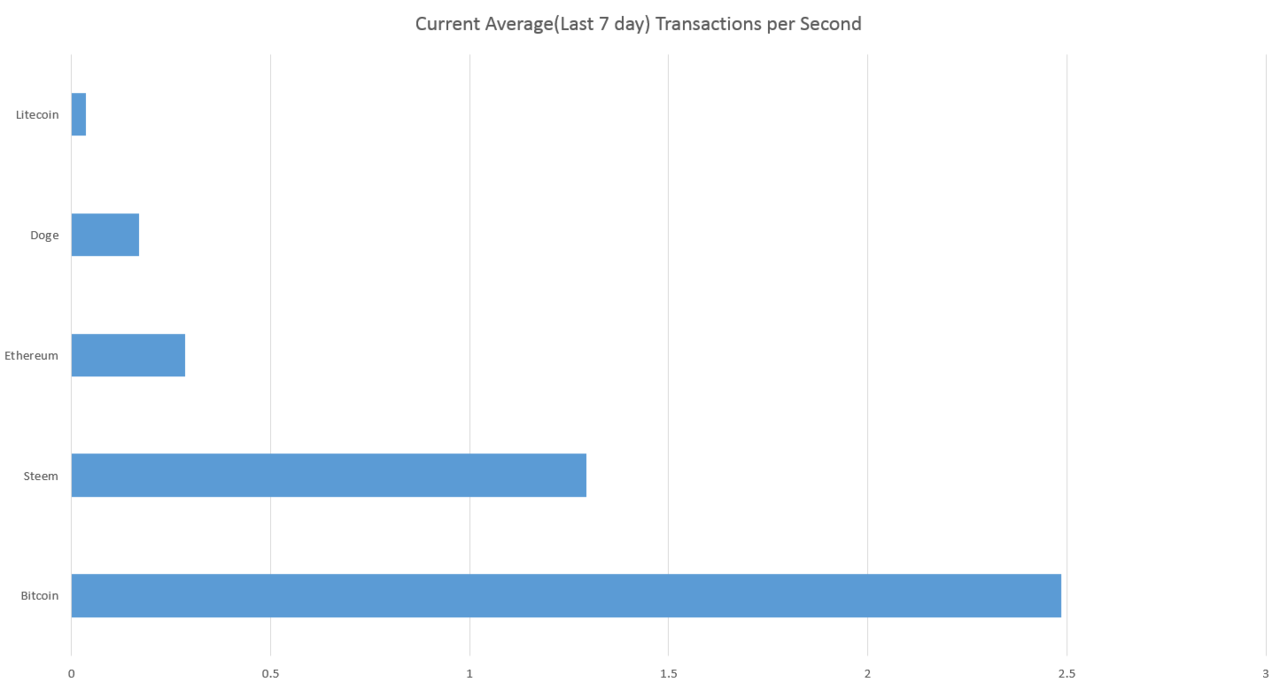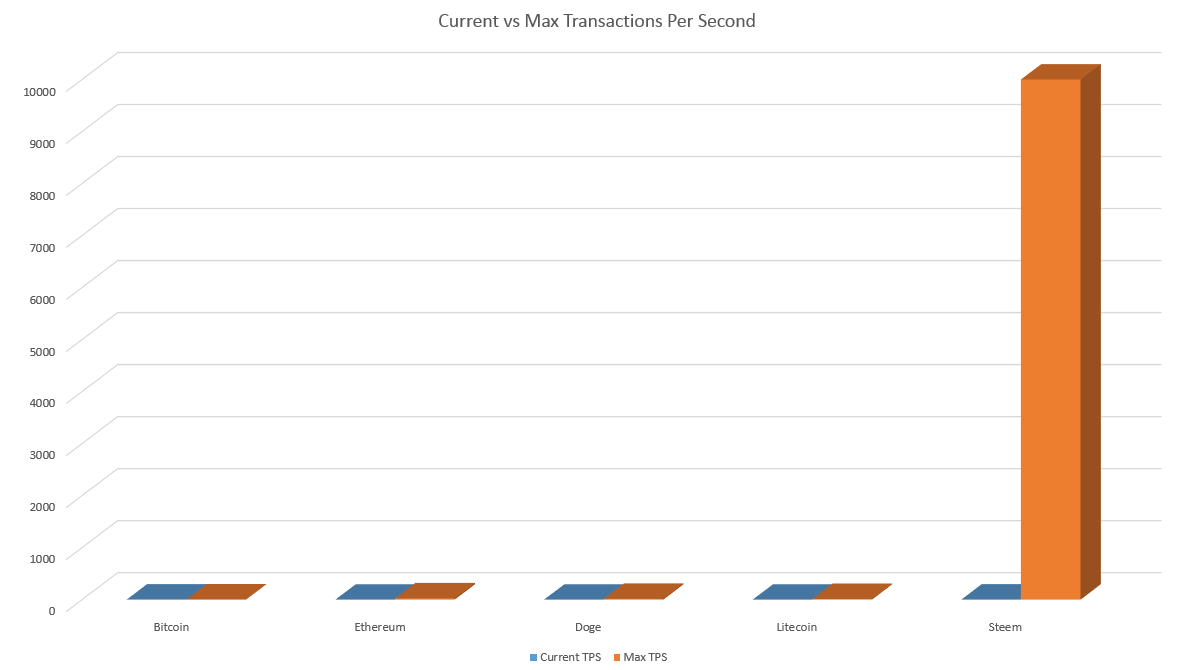
How does your chain's Transactions Per Second compare against the most popular digital currencies
Today i would like to comparing the current Transactions Per Second for the most popular digital currencies in an effort to compare Steem's current Transactions Per Second with it's peers.
This comparison is on current usage of the network and compares the following currencies
- Bitcoin
- Ethereum
- Steem
- Doge
- Litecoin
Sadly i could not find the relevant data to include Ripple in this comparison
The results
The charts below clearly show that Bitcoin is currently leading the Transactions Per Second race although STEEM has show significant growth in the past 2 weeks; If this trend continues Steem will soon outpace bitcoins Transactions Per Second. In my opinion at the rate of growth that we have seen recently i think surpassing bitcoins current ~3 Transactions Per Second will occur before the end of August and to my knowledge will be the first blockchain in history to accomplish such growth.
30 day - Transactions Per Seconds

30 day - Transactions Per Day

7 day average - Transactions Per Seconds

Maximum Theoretical and practical Transaction Limits
Bitcoin
Bitcoin uses a Proof of Work consensus mechanism. You may notice that bitcoin transaction limit is flat and not trending higher; Bitcoin is undoubtedly the most popular digital currency but in it current iteration it has reached its transaction limit based on the size of blocks and the average size of transaction.
Theoretically bitcoin could process 6.8 transactions per second based off the smallest possible 1 input 1 output P2PKH transaction and 10 minute blocktimes with a 1mb blocksize; based on today's average sized transaction (550 bytes) it can realistically process 3.1 transactions per second.
The TPS of bitcoin (same with Dogecoin and Litecoin) is being reduced due to inflated transaction sizes. Bitcoin is a Tx in/Out systems and as such every transaction need to reference at least 1 input and 1 output or OP_RETURN and if the output does not received the full amount of the input minus transaction fee there will likely be a change address also included as an output.
Each Input's required a previous TX hash, index and a valid signature scriptSig
Each non OP_RETURN Output requires a locking script known as a scriptPubKey.
Given that inputs are not divisible; it is often the case where you will need multiple inputs and/or output for a simple Alice -> Bob transaction.
Until this block size issue is resolved; bitcoin will be constrained to roughly 2.5 - 3 Transaction Per Second
Ethereum
Ethereum uses a Proof of Work consensus mechanism and has a different method of determining blocksize; it is limited by a GAS limit which can be adjusted over time; this gas limit restricts the amount of transactions based on the amount GAS being expended per block. Ethereum has been tested on a public test-net at 25 Transaction Per Second. Theoretically this could be higher relative to the GAS limit being raised over time.
Ethereum is a ledger based system so simple Alice - Bob transaction do not suffer to the same degree from the transaction size complexity that plague the TX input/Output systems. therefore 25 will be it's realistic Transactions Per Second rate with the current Gas limit.
Dogecoin
Dogecoin uses a Proof of Work consensus mechanism and Theoretically can process 33 Transaction Per Second based off the minimal transaction size, but similar to bitcoin given that transactions are not generally single input single output transactions and therefore take up more space leaving it with a more realistic 16 Transactions Per Second.
Litecoin
Litecoin uses a Proof of Work consensus mechanism and theoretically can process 28 Transaction Per Second but similar to bitcoin given that transactions are not generally single input single output transactions and therefore take up more space leaving it with a more realistic 14 Transactions Per Second.
Steem
Steem uses a Delegated Proof of Stake consensus mechanism and is built on the Graphene toolkit which has been shown to sustain 10,000 Transaction Per Second on a public distributed test net and theoretically can process 180,000+ Transaction Per Second on well spec'd nodes.
Comparision
I had to make a graph without Steem so that the comparison would actually show meaningful data. In the charts below the Blue series represents the current utilisation based on Transactions Per Second and the Orange series represents realistic or tested Transaction Per Seconds capabilities.
This graph shows all coins without Steem

This graph shows all coins including Steem

Graphene; a world class scalable blockchain solution
Steem as with Bitshares, Peer Plays, Muse and Play is built on a high performance industrial grade blockchain that has been battle tested with incredible results; it has been built from the ground up by the team to Cryptonomex being lead by the Co-Founder of Steemit Dan Larimer and boasts incredible scaleability and 3 second blocktime's.
It is this remarkable back-end that allows application like Steemit and the Decentralised Exchange built into Bitshares to function at speed's of their centralised alternatives and the reason why some of the people here on Steemit don't even know they are using a blockchain backend!
